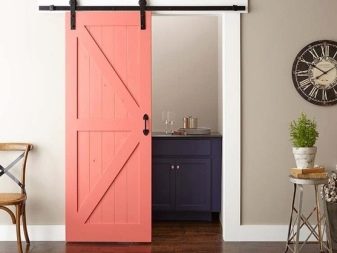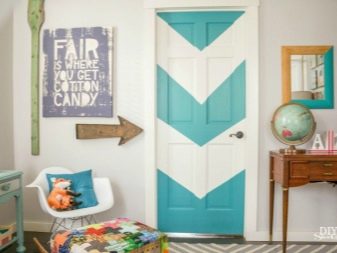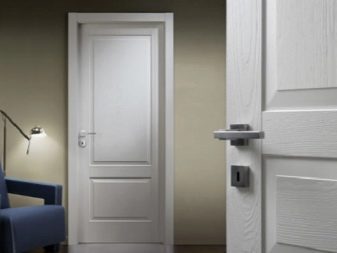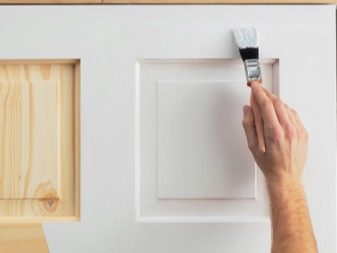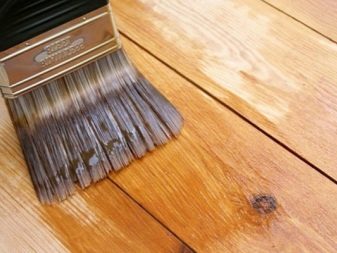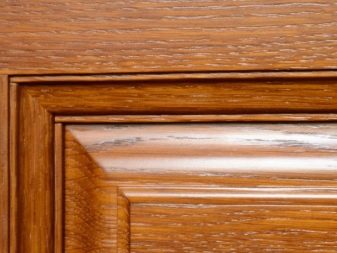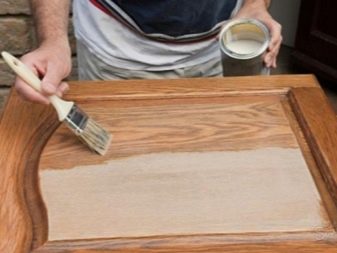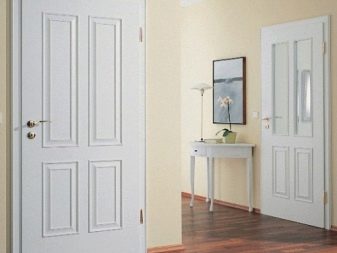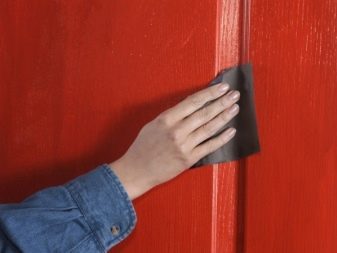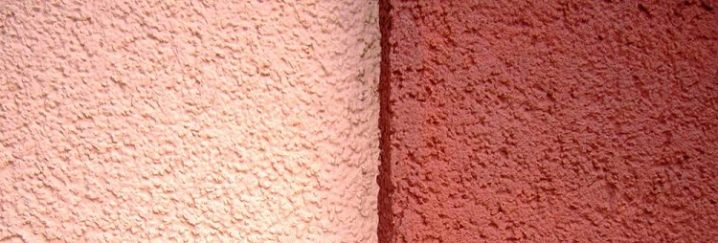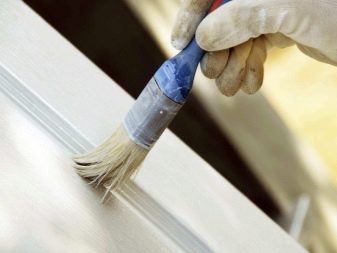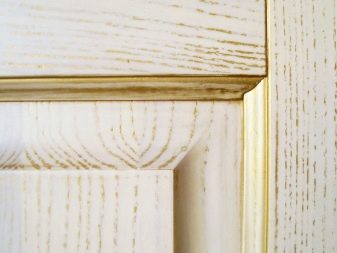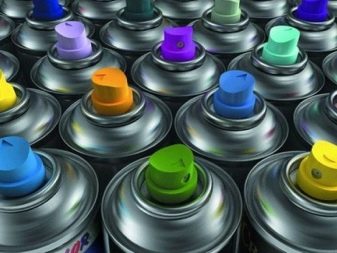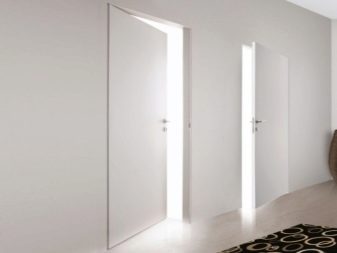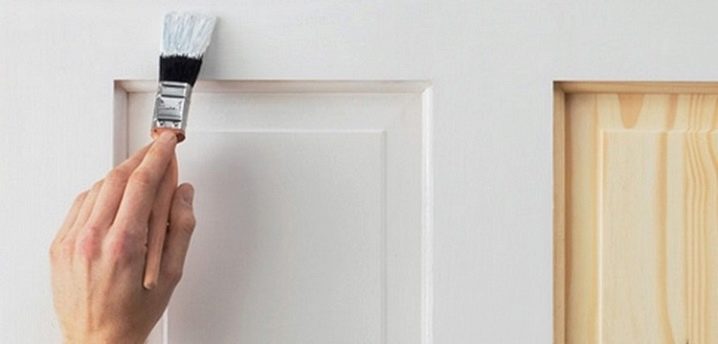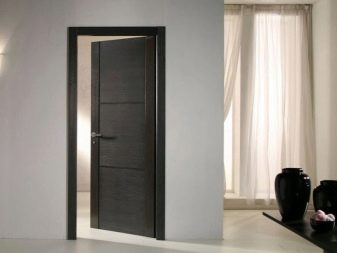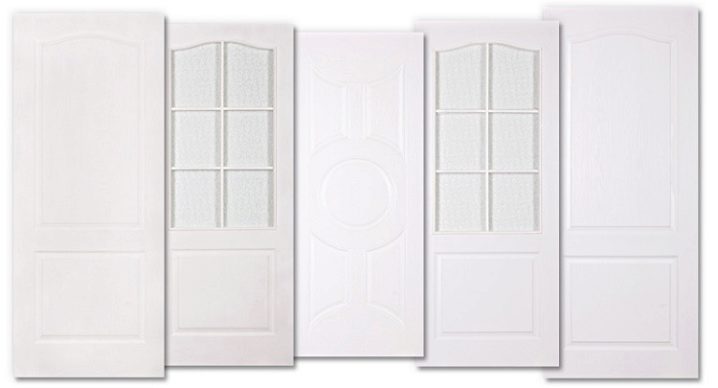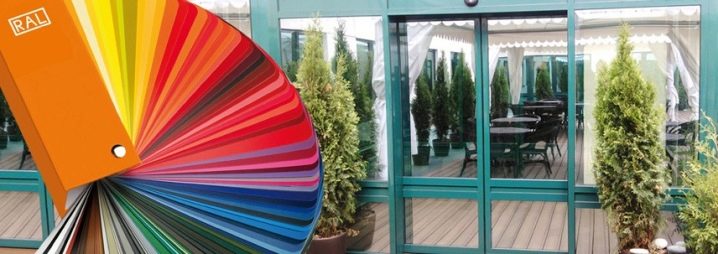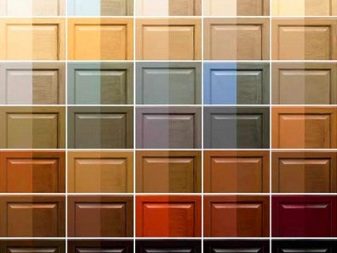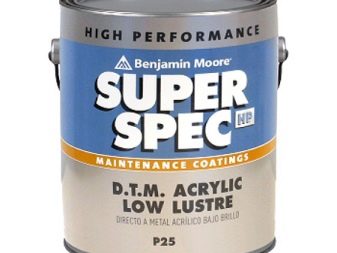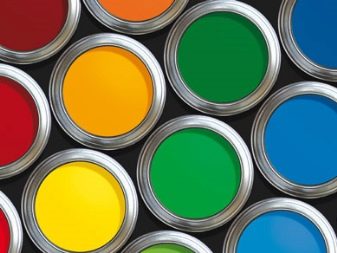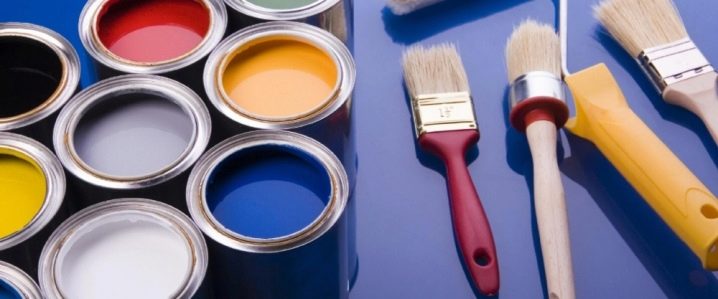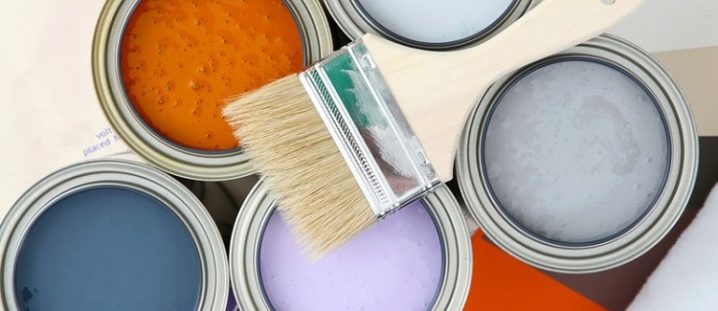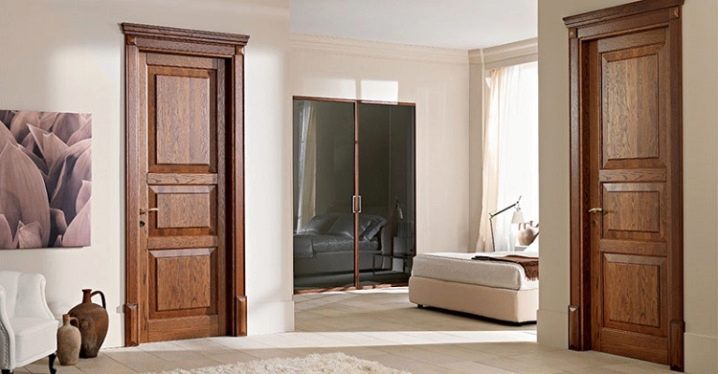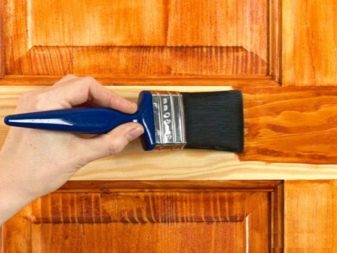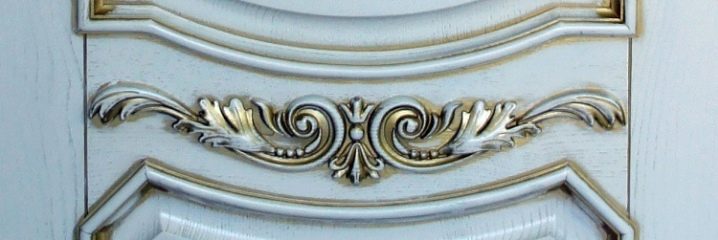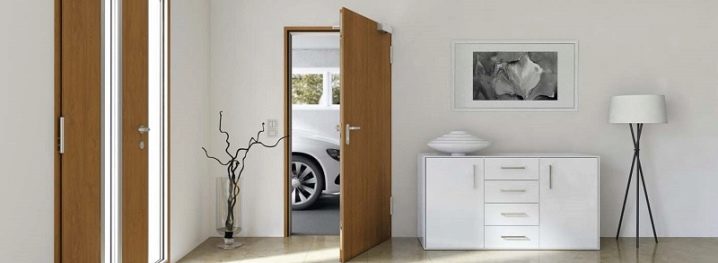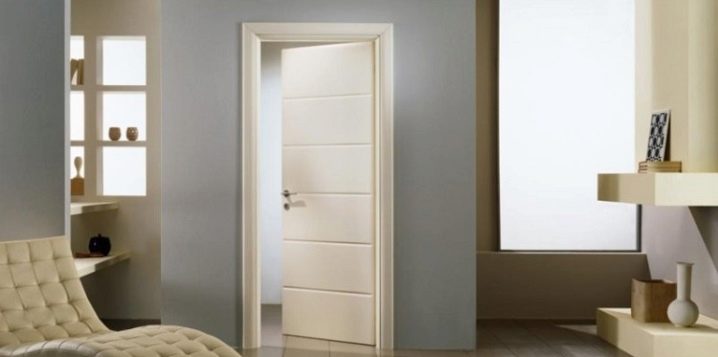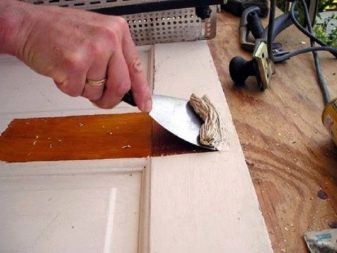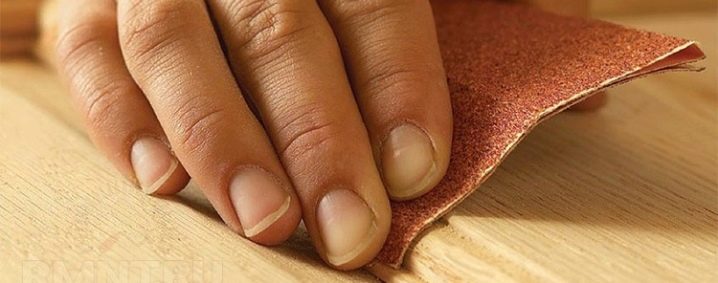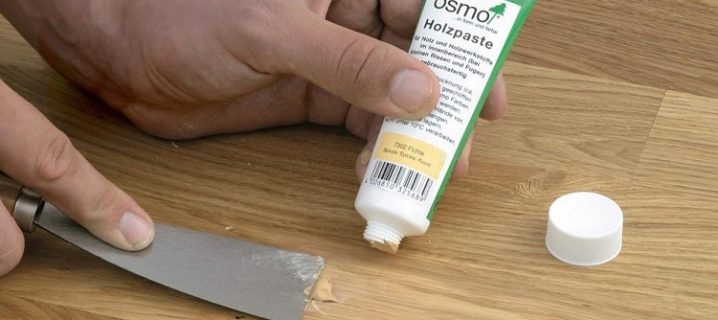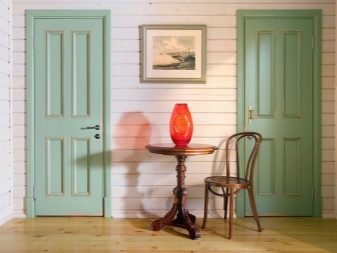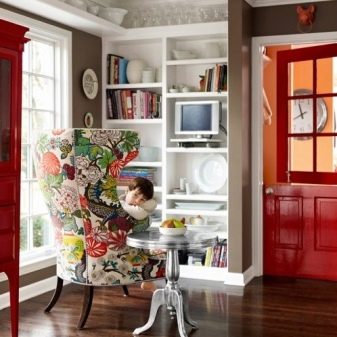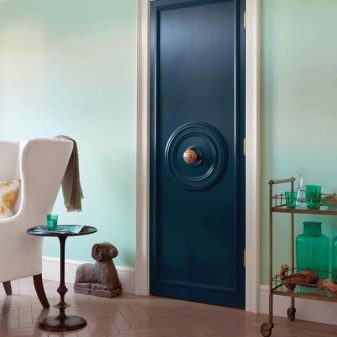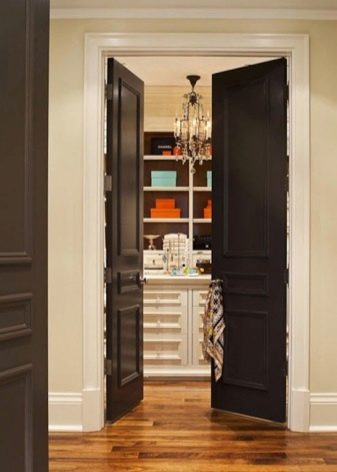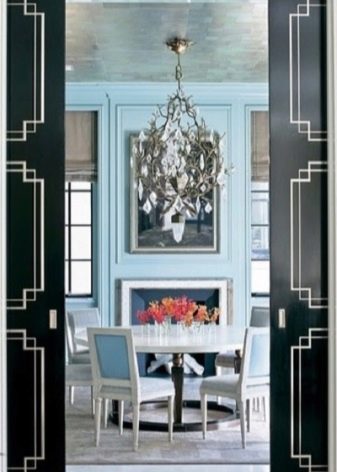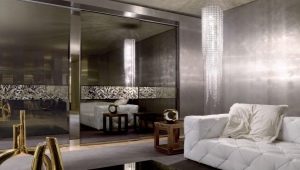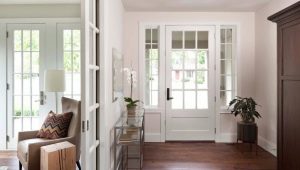Interior doors for painting

A wooden interior door can serve the owners for decades, but at some point it still loses its aesthetic appeal. However, if this happened, it is not a reason to replace it with a new one. In this situation, the restoration of the door covering will help, or more simply, its painting. It is useful to be able to paint the door yourself and in the case when the owners want to arrange the door leaf independently and to their own taste, for which they acquire an unpainted wooden door.
Features of the painting process
Painting the door is not so difficult, but not so primitive as to undertake this work without reading the tips for its implementation.There are many nuances, the knowledge of which will allow you to perform this work at a professional level. It is often necessary to restore the appearance of an old wooden door, in which case the painting process is impossible without freeing the surface from layers of old paint, which is often even more difficult than painting itself.
Even at the preparatory stage, it is necessary to decide whether the owner wants to preserve the unique texture of the wood canvas with varnish or wants to hide it under a layer of paint with a texture pattern. Perhaps the owners have a desire to make exquisite patinated or brushing wood to get a truly exclusive product.
Each of the above tasks can be called painting, and each of them has its own implementation features. Also, the features of the door painting process are laid in the nuances of the paint compositions, since the technology of waxing is significantly different from painting with textured paint.
Varnish
The simplest and most understandable is the method of applying varnish on the surface of a new and not having defects in doors made of solid wood or MDF.This door is usually purchased "for painting", and, therefore, supplied already primed. Varnish can be colored or transparent. The work includes two stages:
- Cleaning door leaf from dust;
- Lacquering, which is carried out in several layers with the obligatory intermediate drying.
Preserving tree structure
This method is also usually used for surfaces that do not have mechanical defects, but do not contain a previously applied primer. This type of staining helps to restore the color of a used tree. In this case, transparent dye compositions are used: stain, impregnation, wax oil, or translucent paints. Work in such cases includes the following steps:
- Sanding paper ("sandpaper" of various degrees of grit);
- Primer, for which waxes, acrylic or silicone compounds are used (with subsequent waxing, this procedure is not necessary);
- Staining with wax, stain or translucent paint (depending on the intensity of the color, this procedure can be carried out up to three times);
- Surface coating with clear lacquer to maintain durability of paint (it is advisable to apply three layers)
Texture Paint
Texture paint, also called textured, can be applied both to the surface of a new tree and to an old canvas with mechanical defects. In this case, pre-grinding is not required, and the process consists of the following steps:
- Cleaning the surface of the old coating and dust, drying;
- Coating with adhesive primer;
- Applying paint (to impart a surface texture, paint is applied using a trowel);
- Create texture (sponge or spatula);
- After 24 hours carry out the application of tinting, creating a pattern;
- The removal of the top layer, which occurs either with a sponge or grinder.
Patinated
For used wood, patination in the form of patination makes sense to combine with brushing, which is the removal of the top layer of wood. This creates a unique "antique" effect. The procedure is carried out in several stages:
- Wood surface treatment with an iron bristled brush;
- Applying white primer;
- After complete drying, gray patina is applied;
- Removing the top layer of patina (for this purpose, use a grinding block with a fine abrasive);
- It is possible to cover an additional tint of patina along the edges, followed by its removal;
- Varnish coating (at least two layers).
Enamel
The main stages in the enameling of wooden surfaces that were in use:
- Remove old paintwork;
- Sanding the surface, removing resin (for pine doors), fungus;
- Putting putty in places of defects;
- Surface degreasing;
- Primer;
- Enamel.
Types of paintings
All types of interior doors are suitable for painting. If you wish, you can even paint a plastic balcony door, but to get a lasting result you will need a special spray paint in cans, for example, Amphibolin 2000.
In the case when it comes to the desire to paint the wooden door to your liking, you can buy a new door leaf. There are kits for sale that include a box and door leaf made of wood grown in Russia.
Wooden doors can be made of an array of different types of deciduous trees:
- Buka, which is considered the "tree of kings" for the high quality of the products;
- Oak, characterized by excellent strength and reliability (especially bog oak);
- Walnut, the wood of which gives a moire pattern and a noble dark color;
- Ash, which is considered equal to the strength of the oak, but having a more moderate price tag;
- Linden wood with light wood and affordable.
Or from a variety of conifers, for example:
- Ate, which, although not considered to be too durable material, is quite suitable for an interior door;
- Pine, which has a beautiful color, is very common and affordable;
- Cedar having high reliability and resistance to mold and mildew;
- Larch, whose strength is comparable to the strength of oak.
Such door constructions usually play the role of interior doors, but some softwood varieties, such as pine, spruce or cedar, are also used for baths and saunas.
Also suitable for painting door leaf, which has a hybrid structure: the basis of the framework of veneered or solid pine and the main canvas of MDF, fiberboard or particleboard. The coating of such a web can be made of various types of veneer.
Such veneered doors can be panel or shield. Paneled are good for installation in the form of classical elements of the interior, while unpretentious panel structures have received a completely unexpected use in our time. Due to the smoothness of the door leaf, they have recently been increasingly used to create hidden interior doors, or, as they are called, invisible doors.
For complete privacy, such a secret door is mounted in an aluminum door block, invisible from the outside and having hidden hinges. Coloring a hidden door is carried out directly on the installation site and be sure to match the wallIn which this door is embedded.
Popular colors
At all times, interior doors with natural colors of wood enjoyed the highest demand. Therefore, if there is an opportunity to paint the door while preserving its unique color and pattern of the material, then this should not be neglected.
Due to the large variety of dyeing waxes, stains and colored translucent varnishes, you can add a beautiful natural color to new or used wood. The main colors in which you can tint a tree without closing its texture are:
- Types of natural wood coloring (pine, ash, maple, birch, larch, oak, rosewood, mahogany, teak, cherry, walnut, etc.);
- Shaded variations of natural shades (dark beech, dark cherry, dark pear, dark mahogany, dark walnut);
- Light shades (light cherry, light oak, light tick. Light elm);
- Tinted tones (rustic oak, which has up to four shades; red walnut, middle larch, etc.)
The oils and waxes used for tinting wood also have colors similar to those of wood:
- Maple;
- Beech;
- Birch tree;
- Cherry;
- Mahogany;
- Wenge;
- Oak and Oak Antique;
- There are emerald green and gray-blue wax;
- White, which, however, looks more creamy than white;
- Colorless;
- Graphite and others
Wood enamels provide the richest palette of colors, for some manufacturers, for example, Benjamin moore, there are up to 16,000 shades that can satisfy even the most sophisticated demands of consumers. The main ones are as follows:
- White;
- The black;
- Red;
- Brown;
- Green;
- Blue.
How to paint?
The choice of paint depends on what type of door should be obtained in the end, on the availability of experience and skills and on the conditions in which the work will be carried out. If you have to paint the door in a residential area, then you should choose a paint without odor, so as not to harm the health of others.
The following types of enamel paint are suitable for wood and its derivatives:
- Acrylic, which perfectly hides bumps and defects, protects against mildew, moisture; it gives a significant covering layer; many manufacturers produce acrylic paints with an eco-friendly composition;
- Alkyd, which is very similar to the classic oil paint, has maximum protective qualities, designed for a service life of up to 4 years;
- Polyurethane, having a large margin of strength and elasticity, perfectly fills the pores of the tree, protecting it from moisture and dirt;
- Water-dispersion and a related water-based emulsion (acrylic variety is particularly well-suited for wood), which is quick-drying, has no toxic substances and an unpleasant odor and provides a durable coating.
Such modern fashionable paints as powder and hammer, it is not customary to apply to the coloring of wood. The first because of the complexity of the equipment required for application, and the second due to the high cost.
In addition, both of these paints are designed, mainly for painting metal products, although if desired, a wooden door can be treated with hammer paint.
There are specific tools for dyeing wood, such as waxes and wax-based oils. The advantage of such coatings is that:
- They allow the tree to "breathe";
- They give an opportunity to carry out a local restoration of the damaged surface area;
- Fully preserve the texture of the tree, if necessary, changing its color.
Among the minuses - a long period of complete drying, since it will be possible to use the treated door only 3-4 days after impregnation; also waxed surfaces may stain clothes, to prevent this from being coated with varnish.
Paint the interior door can also varnish, which can be transparent or translucent. According to the composition of varnishes can be:
- Water based.They are odorless, transparent and have leveling qualities;
- Polyurethane-based, which include acrylic and linseed oil, thereby increasing resistance to aggressive environments;
- Acrylic based on acrylic resin, which is an environmentally friendly product. Such varnishes are most resistant to fading, detergents and high humidity;
- Alkyd-urethane, particularly resistant to moisture;
- Acrylate (water dilutable) resistant to moisture and high temperatures.
Paints for such a fashionable and interesting type of staining, such as patinated, may also differ in their composition.
Patina happens:
- Acrylic, having the maximum number of color varieties;
- Bituminous, which gives a dark brown color;
- Wax patina, having some choice of color - from natural to blue green tones;
- Patina on the basis of shellac, giving a color from golden to reddish;
- Oil patina, which is rarely used lately.
DIY painting: tips
To paint the door at home is quite capable of any skillful person,however, since part of the work is connected with the necessity of lifting weights, for some moments an assistant may be needed. This is especially true of such work as removing from the hinges of the door leaf and hanging it in place.
Before starting work, you should prepare all the necessary accessories for painting. It is also important to make sure that the paint, plaster and primer that are purchased are intended for interior woodwork.
What materials are needed?
The following tools and devices are needed:
- Goats or other device for laying the door leaf in limbo;
- Brush and roller with a small pile;
- Paint tray (when using a paint roller);
- Hammer and screwdriver;
- Sandpaper;
- Clean rags;
- Putty;
- Primer;
- Paint.
How to remove the old paint from the door?
For convenience, the door needs to be placed vertically on the goats, remove all the handles and hinges, seal the holes in the locks with tape. Then you want to remove all the old paint, as well as layers of putty and primer, that is, leave for subsequent processing only bare wood.
This will require additional funds:
- Putty knife;
- Construction dryer;
- Remover for old paint (chemical composition, which can be purchased at the store).
Usually the old paint on the door is several layers and to clean it, you have to work hard. There are two main methods of removal: using a washer or using a building hair dryer:
- To soften, a wash solution is applied and allowed to penetrate deeper; the exposure time depends on the characteristics of the particular agent and can take up to two hours. Seeing the impact of washing is easy: when the old paint starts to bubble and peel off, it can be picked up and removed with a spatula. This procedure is carried out until complete removal of the old coating.
- To remove the old paint it is heated with the help of a building hair dryer, while simultaneously removing it with a spatula. While the paint is in a heated state, it is soft and pliable, but if it cools down, the composition hardens again.
It is possible to use both of the above methods sequentially or combine them to achieve the best result. Small patches of old paint can be removed with sandpaper.After applying the wash, the wood must be thoroughly washed and dried.
How to change the tone?
When making the door in a bright color, you must make sure that this color will be appropriate in this space. To do this, you can apply the selected paint on a couple of boards and attach it to the surface of the door. In the case of a successful choice of a new door will decorate the house.
In order to repaint the canvas in an apartment, the most convenient are acrylic paints based on water or alkyd resin-based products. Algorithm of work:
- Initially, remove small dents, remnants of old paint and scratches with sandpaper.
- Then you need to putty the door. For this special wood putty is purchased. This is done to level the surface.
- Drying putty.
- After drying, repeat the treatment with sandpaper.
- Apply a coat of primer, wax or oil.
- The process of painting is always starting from the upper left corner of the canvas.
- We paint over small details with a brush, large canvases with a roller.
- Paint application is carried out exclusively in the direction of the wood fibers.
Original design
The cozy living room, decorated in the style of Provence, pleases the owners with the white color of the covers of the luxurious French window and numerous neat shelves. Two bright fragments of red are becoming a pleasant and appropriate accent in this room: an antique cupboard and a Dutch door with glass inserts. Absolutely appropriate in this interior looks high comfortable armchair, having an attractive multi-color upholstery.
The door, painted with an enamel of an unusual dark aquamarine color in this room is completely harmonious, since its design echoes the walls of a transparent aquamarine tone. Figured white platbands have a continuation in the form of a plinth, a round knob, unusually located in the center of the door leaf, reminds the owners of the fabulous world of Middle-earth and the housing of the famous hobbit.
Doors covered with matte chocolate enamel will be very attractive in a classic interior. The color of the door covering is repeated in the color of the parquet, the back of the cabinets and in the elements of the elegant chandelier. Since the walls of the room are painted in light pastel colors and the door panels and floor plinth are white, the dark door covering does not “eat up” the space.
Add additional detail to the room will help painting a wooden door with decorative trim in a contrasting color. For example, in the living room, made in bluish-gray shades, it would be appropriate to put a sliding door-case of dark-aquamarine, almost black, diluting the darkness of the door panels with thin lines of white geometric pattern.
Such a technique transforms a room hidden behind the doors into a kind of picture that opens to the entrance when the doors open. Strengthen this impression designed thin white trim, turning the door frame in the elements of an elegant baguette.
To learn how to paint the door, see the next video.
